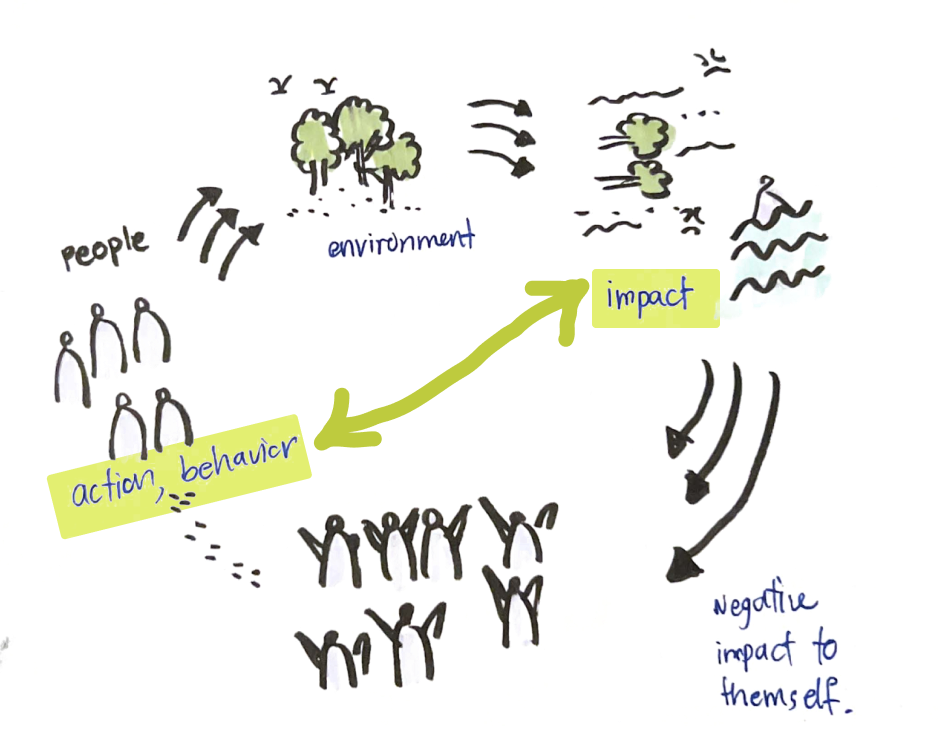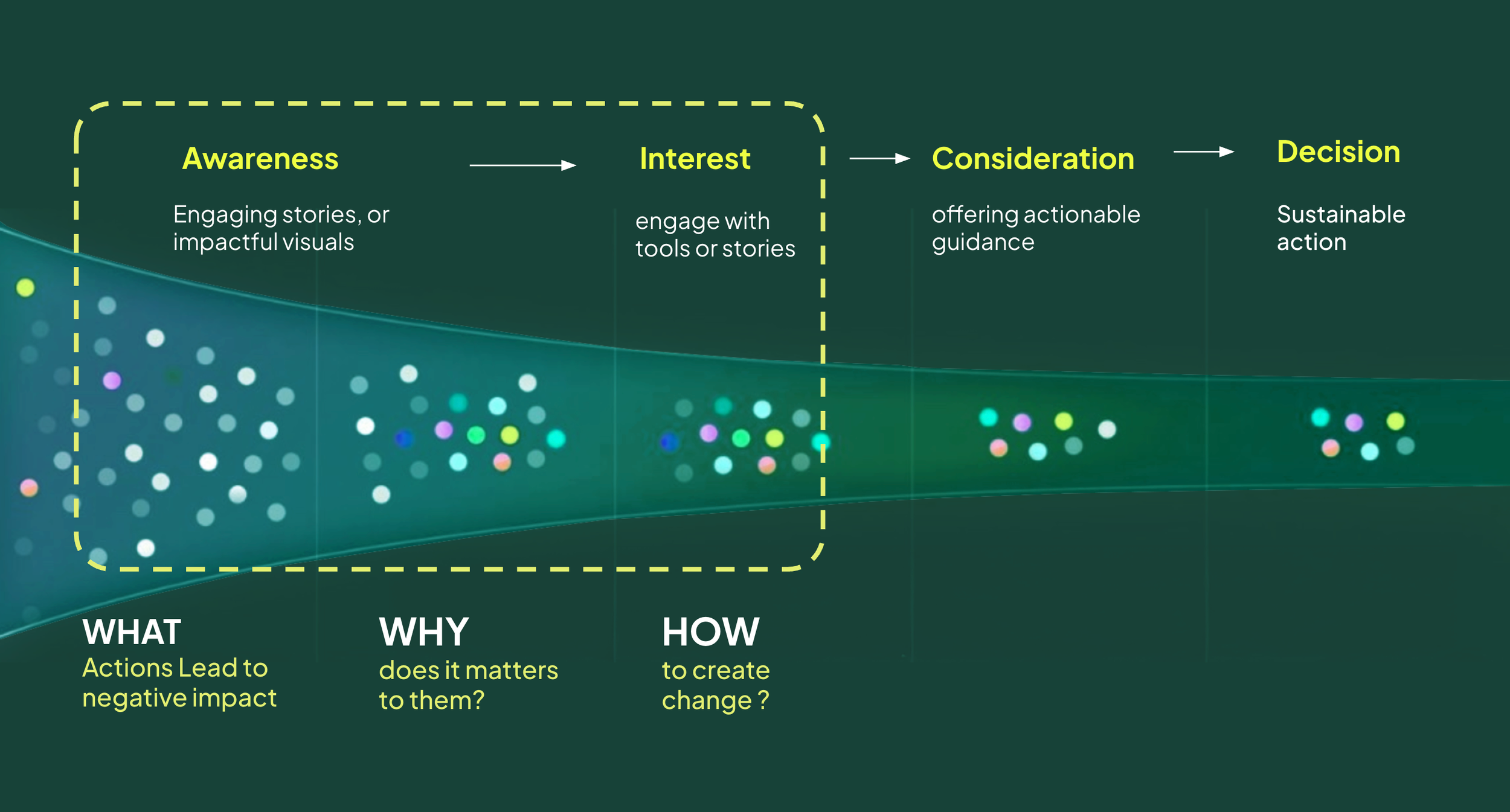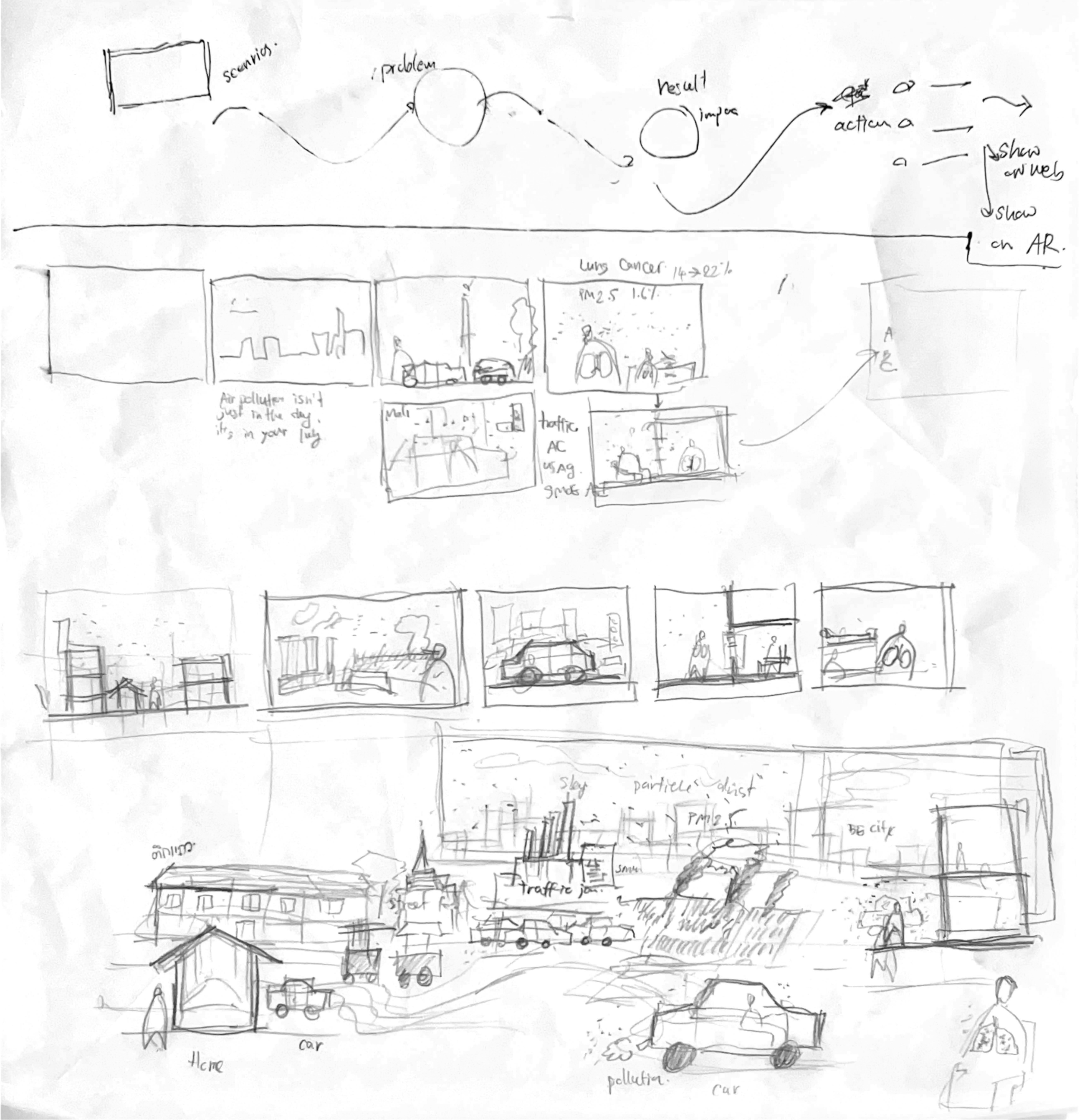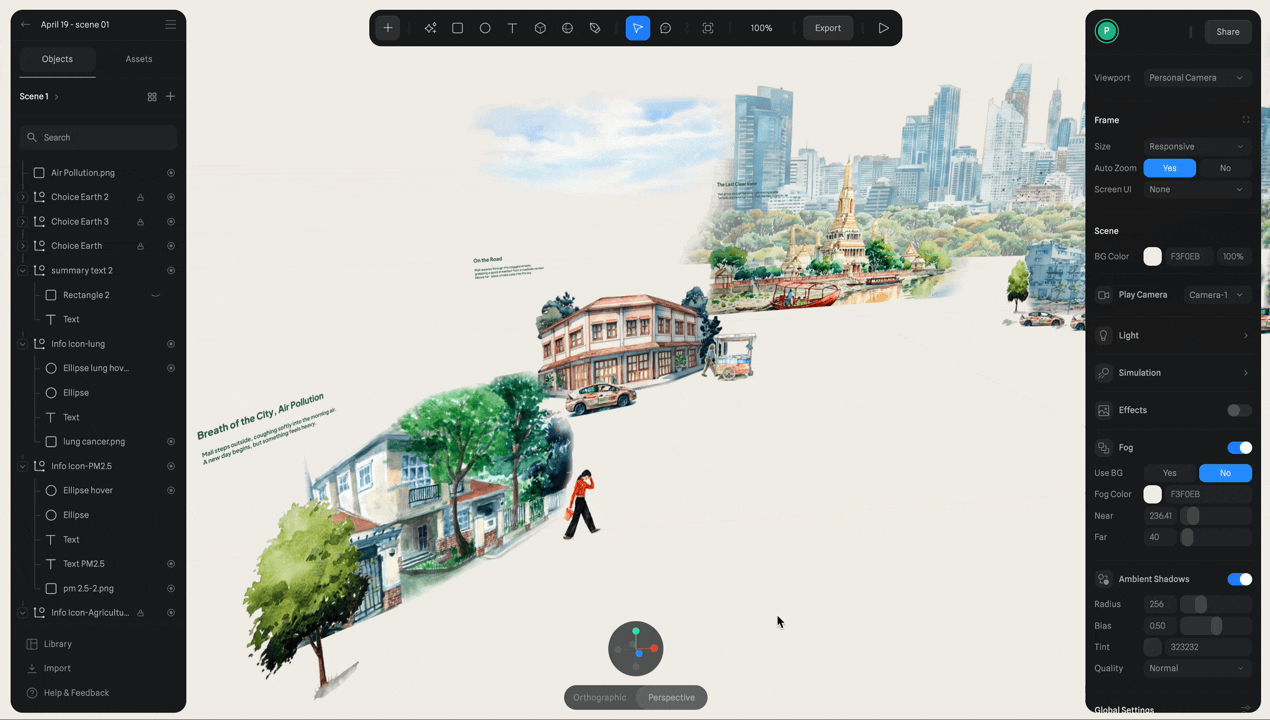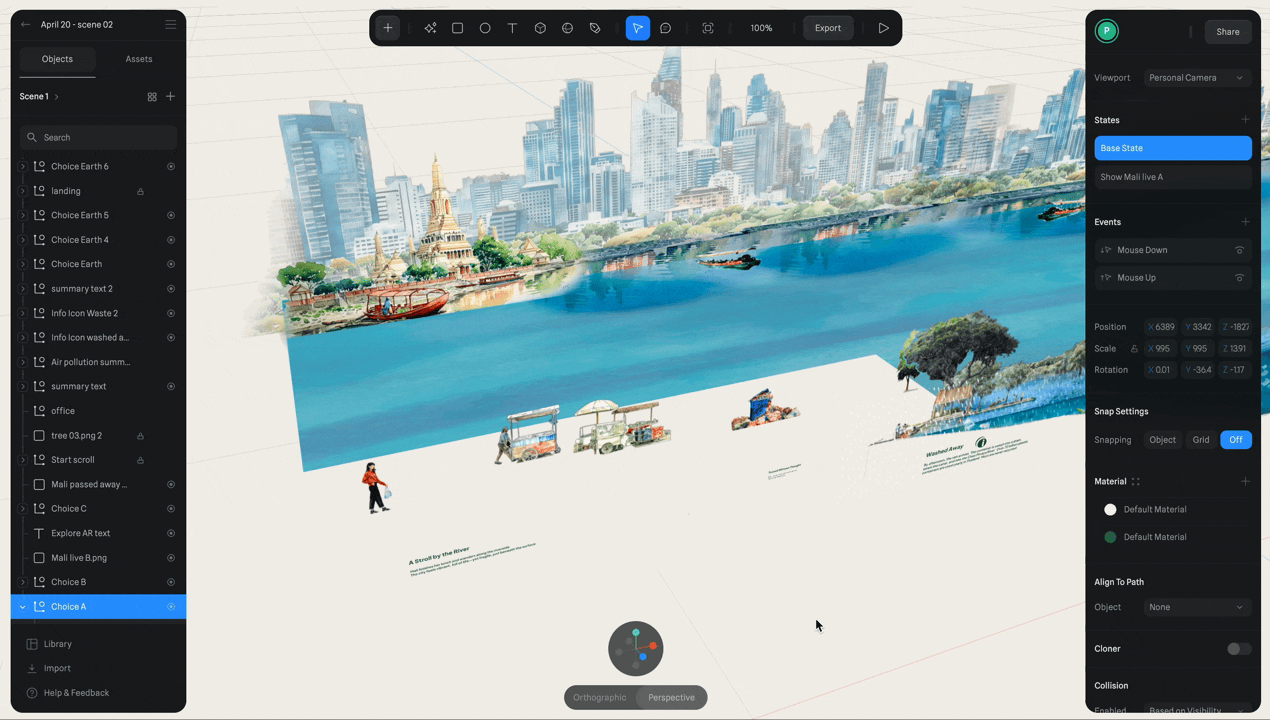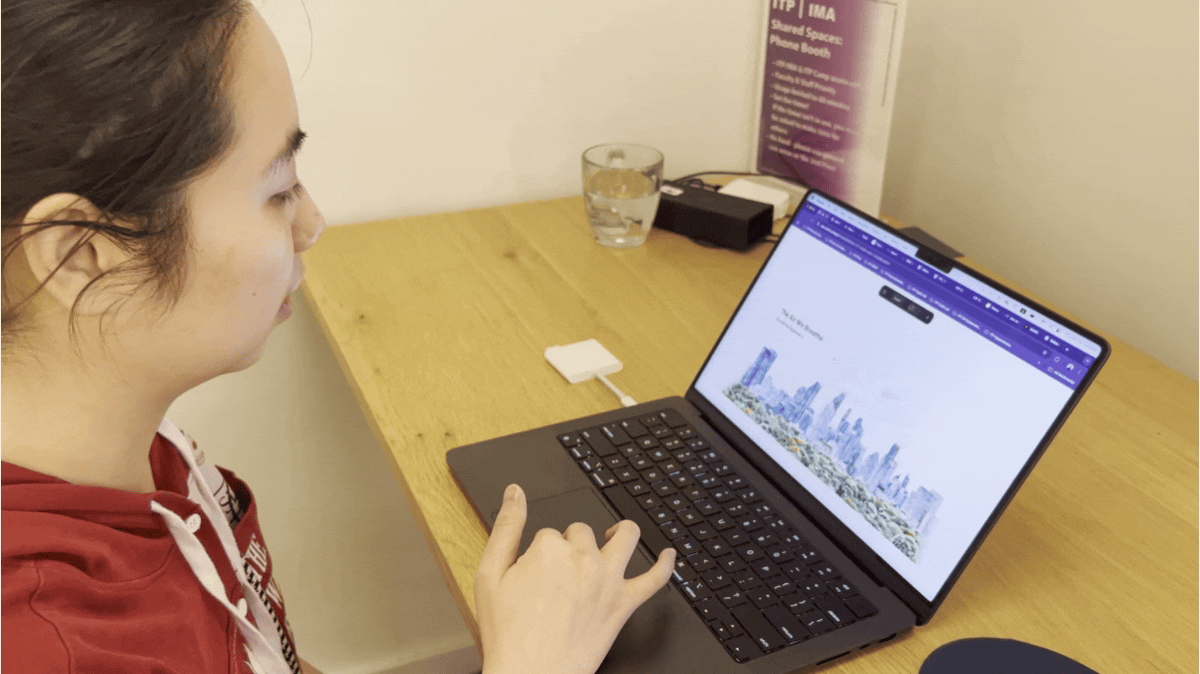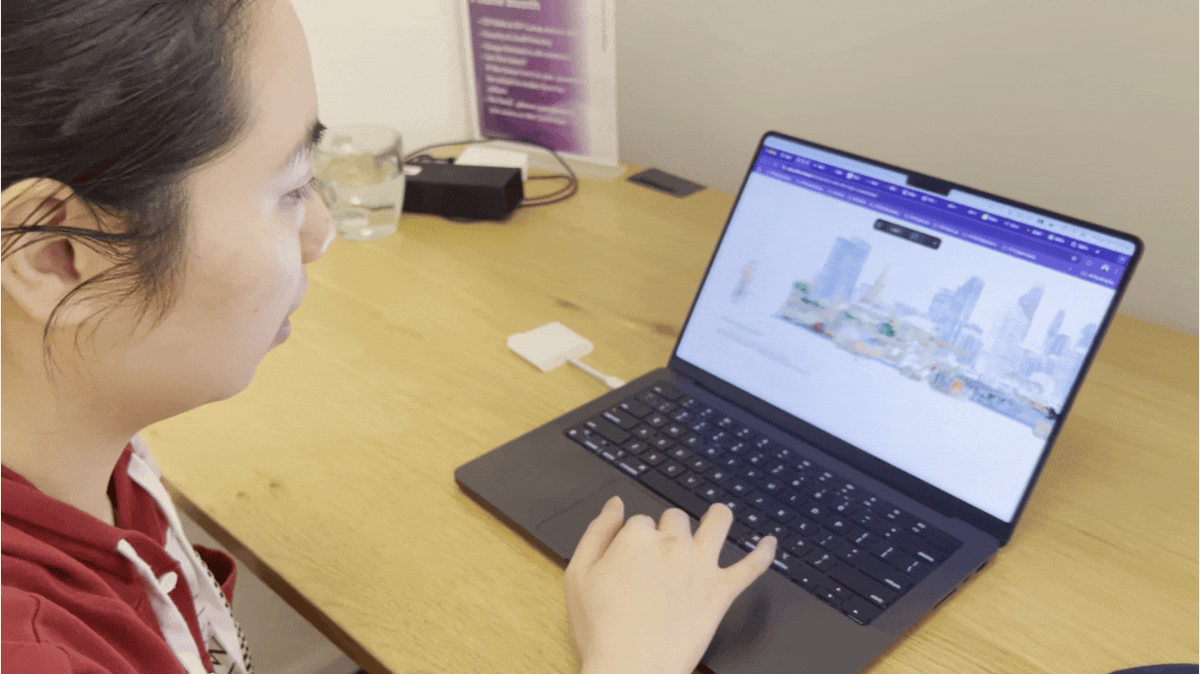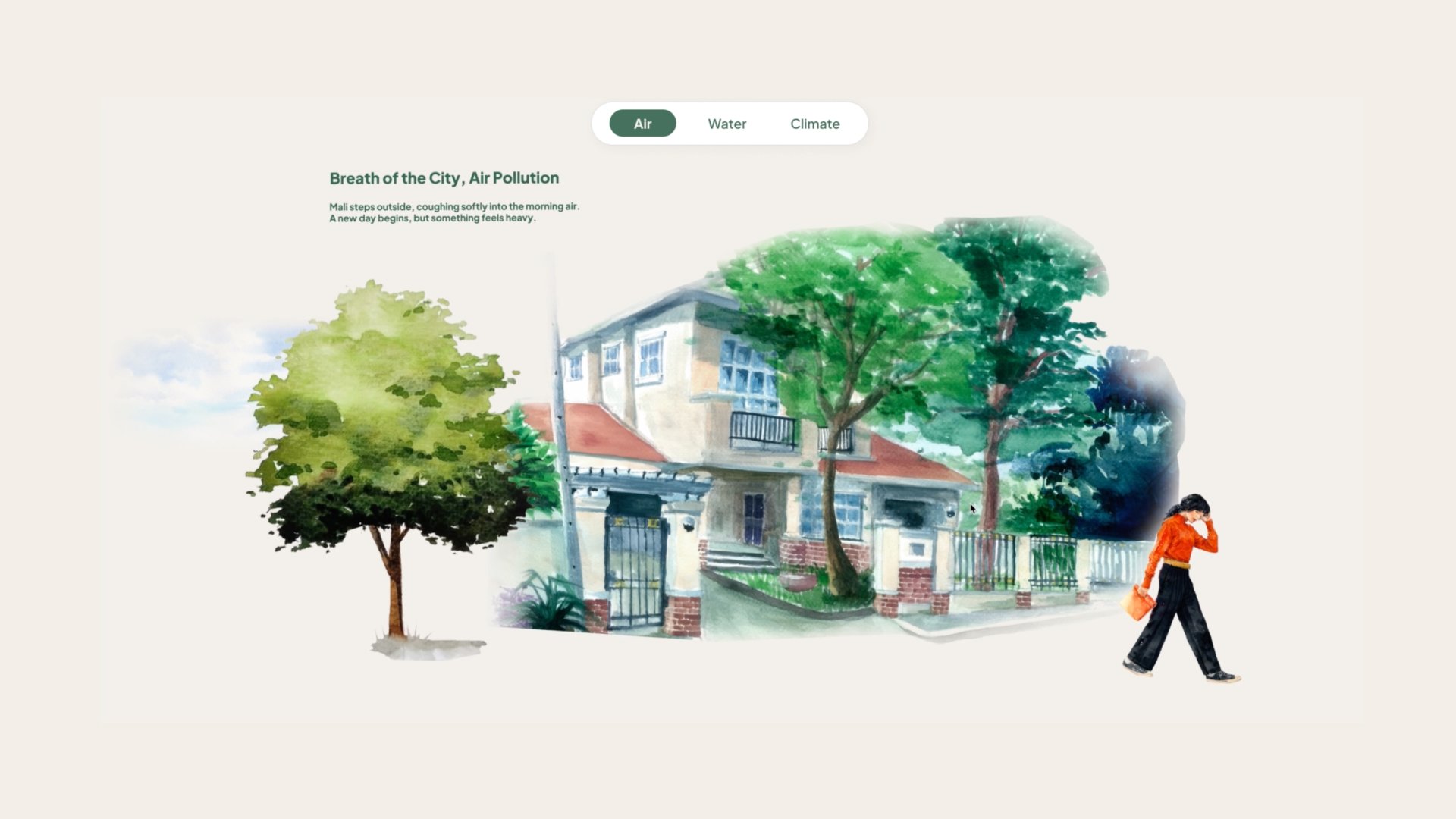
A Day, A Choice, A Future
It’s a 3D interactive web experience that explores how our everyday actions impact both the environment and our well-being. 3D interactive web, Environment issues, Interaction design, Visual Storytelling.
Project Type
Thesis, ITP at New York University
Year
September 2024 - May 2025
Research Questions
“How might we raise awareness about environmental issues in a way that inspires people to take sustainable actions?”
This diagram shows a cycle: our actions affect the environment → those impacts come back and harm us → and the loop continues. So the big question is—how can we break that cycle?
Background
I come from a background in landscape architecture. These are some freelance projects I worked back in Thailand. I’ve always been fascinated by space, design, and nature. I feel valuable when I contribute to creating a better environment. This was my first solo landscape design project on Samui Island. I designed Villas’ landscape layout , planting and construction drawings, and that’s me in the photo on the left with my client. I love transforming spaces into natural environments, harmony with nature.
Before
After
One Effort Isn’t Enough
However, I started to realize that landscape design alone isn’t enough to solve environmental problems. Yes, I can green up spaces or plant more trees, but real change takes more than just one person’s effort. It requires all of us.
Key Insights from User Interviews
Through interviews, I uncovered three recurring themes:
Lack of Connection to Daily Life
Many people felt that environmental issues seemed distant from their everyday routines. One person shared, “I don’t see how it relates to my daily life, so I don’t feel the immediate impact.”
Emotional Triggers & Personal Relevance
Environmental concern often emerged only after a personal experience. As one user put it, “I don’t usually care—until I see people I love being affected.”
Barriers to Action
Even when people cared, they felt overwhelmed and uncertain. “I don’t know where to start,” was a common sentiment.
These insights helped shape my approach to storytelling, making it personal, relatable, and emotionally resonant.
Survey Findings
I also conducted a survey to understand people’s top environmental concerns. The results showed that:
Pollution (air, water, and soil) was the biggest concern
Climate change came in second
When it came to barriers, the most common responses were:
A lack of policies or government support
A lack of personal motivation
That last one stood out to me, because it’s something I can influence. By creating emotionally engaging and accessible experiences, I aim to spark that motivation.
Key Findings
When I combined these two research, two themes stood out:
Disconnection from nature—40% said they don’t feel it relates to their daily life.
Barriers to action— 60% people said that It’s inconvenient to change my habits when I don’t see results right away and it’s a lack of motivation
Journey
So the journey starts with awareness, then interest, followed by consideration, and finally, decision. I’ll focus on the awareness and interest phases.What are the actions lead to negative impact? Why does it matter ? And how to create change.
Main Goal
The main goal is to connect the dots between people’s actions and their impact on themselves. And the narrative storytelling will serves as an emotional trigger. People feel more connected when they experience a story they can relate to.
Concept
A gateway that connects people's actions to environmental issues, fostering awareness and promoting sustainable behavior.
Trailer
The Air We Breathe
First experience - The Air we breathe. I started with sketching storyboards on paper. The first story follows Mali as she wakes up and walks through Bangkok city in Thailand, breathing in polluted air. She coughs, and she’s at high risk for lung cancer. Each scroll takes you horizontally through Mali’s day.
Bringing the Story to Life: Interactive 3D Experience
I used Spline 3D to build the interactive experience. Users can click to explore more information, view real images and videos, and make choices that determine whether Mali will live longer based on their decisions. I combined a 2D user interface with 3D design to let users walk through the space, bringing a spatial experience onto the screen. And it’s a website that anyone can access.
The River & Hidden Waste
The second story follows Mali again, this time at lunch. She tosses her plastic container into an overflowing bin. The rain washes it into the river. Eventually, it ends up in her food and her body. In the end, Mali may have inflammation in the body from microplastic-contaminated food.
Bringing the Story to Life: Interactive 3D Experience
Once again, this immersive 3D design creates a connected and engaging experience, feels like you’re exploring a real place, not just scrolling through a webpage.
User Testing
During user testing, some people said: “I hope Mali, the character, lives a long life.” or like “The narrative storytelling made clear what I’ve done and the consequences.” I discovered that to inspire people, not just by explaining facts, but by letting them make their choices and see the consequences.
Some users said this could be a starting point to understand how environmental issues affect them personally. Others expected more on climate change storytelling and clear action guidelines. Finally, Most users (4 out of 5) clicked the link to the sustainable action platform.
A Day, A Choice , A Future
This has been a valuable learning process. Got a feedback to create a better experience. In the future, I plan to incorporate Augmented Reality to let people explore the consequences in a spatial experience. Also, adding more stories around climate change based on the feedback. My main goal still remains - to inform and inspire small actions in daily life.

